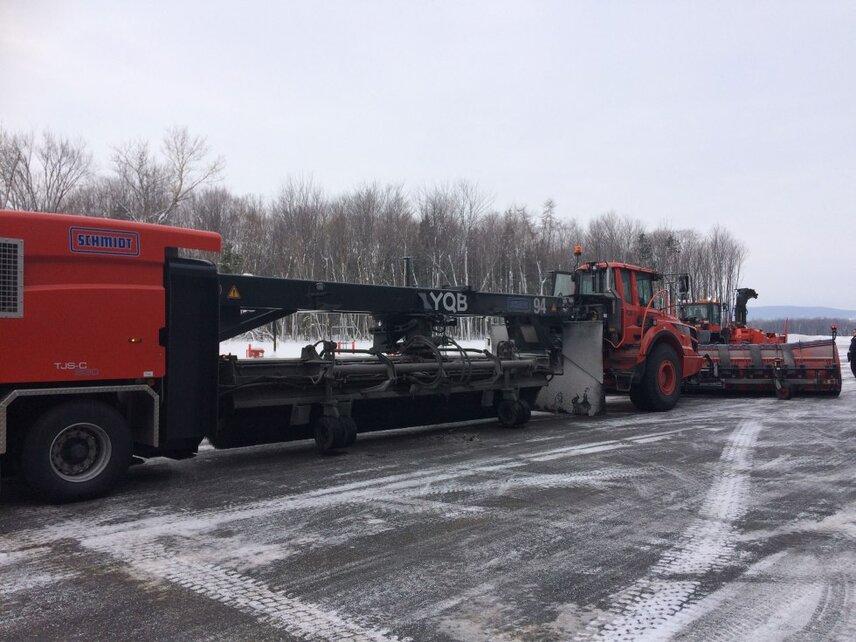As part of the implementation of the TALPA initiative* and GRF** by the ICAO (International Civil Aviation Organization) in 2020, Québec Airport reviewed its fleet of winter maintenance vehicles. It quickly became clear that an additional snow clearing machine needed to be added to the fleet to ensure that the 45-metre-wide runway can still be cleared every single day even if one machine fails. This is why in May 2016 Simon Boucher, Operations Manager at Québec Airport, attended the Snow Symposium in Buffalo in the USA. There he discovered the TJS-C 630 from Schmidt. Following several discussions with the experts from the ASH Group, it was agreed that such a machine would be deployed at the Canadian airport for the next two years.
New year’s gift
Just in time for the new year, the TJS-C with a clearing width of 5,500 mm was delivered to Québec and was in use from the very first week of January. With an average of 320 cm of snow and precipitation falling during the winter months, the city offers perfect conditions to really test out the performance capability of the TJS-C. The machine has since racked up an impressive 500 hours of operation. The efficient jet sweeper is known for its high-performance snow clearance without leaving any residue behind. Simon Boucher comments with great satisfaction: “The TJS-C has fully exceeded our expectations. We made an initial assessment at the end of the intense winter season. On the one hand, we are thrilled at the above-average clearing and blowing performance. But on the other hand, we are also impressed by the ergonomic driving comfort and the ease of operation. For example, all snow plough, sweeping and blower functions can be controlled using a single joystick. The driver therefore controls all processes with one hand, which noticeably increases the level of safety and minimises the risk of an accident. In addition, the free accessibility of all the important units and the optimised arrangement of the components means shorter servicing times for the engineers and therefore shorter downtimes for the machines.” Simon Boucher is also impressed by the lifespan of the sweeper brushes. Whereas on the other machines the sweeper units have a lifespan of around 70-75 hours, on the TJS-C they are used for more than 100 hours before they need to be replaced. In general, the sweeper units are very costly, which is why the brush of the TJS-C is a particularly good investment over the long term.

Free of snow and ice
One of the biggest challenges in Québec is to clear the runway landing beacons located along the side of the runways without leaving any residues behind. “It has been shown that the TJS-C is extremely flexible and efficient. Thanks to its powerful blower unit, it can also clear the last remnants of snow and ice from the lighting beacons, which is an essential safety factor for aircraft that are landing and taking off. We are extremely satisfied with this result.”
Simon Boucher is very happy with all aspects of the training courses provided by the ASH service trainers. The first one took place as soon as the machine arrived in January and a second one followed roughly six months later.
* The TALPA (Takeoff and Landing Performance Assessment) advocates greater safety at airports in North America.
** GRF = Global Reporting Format
